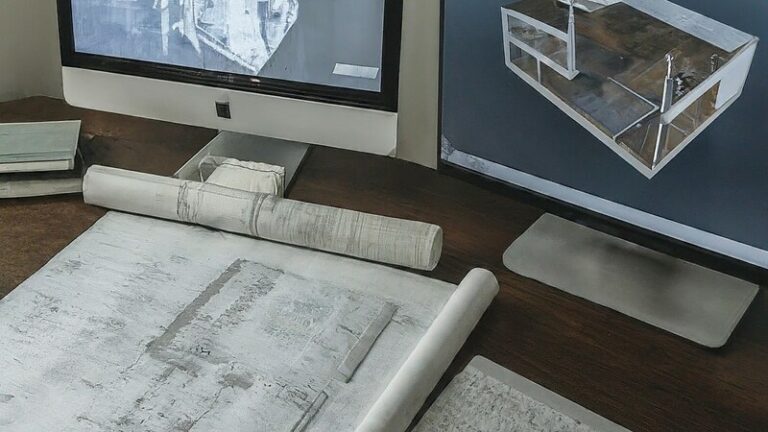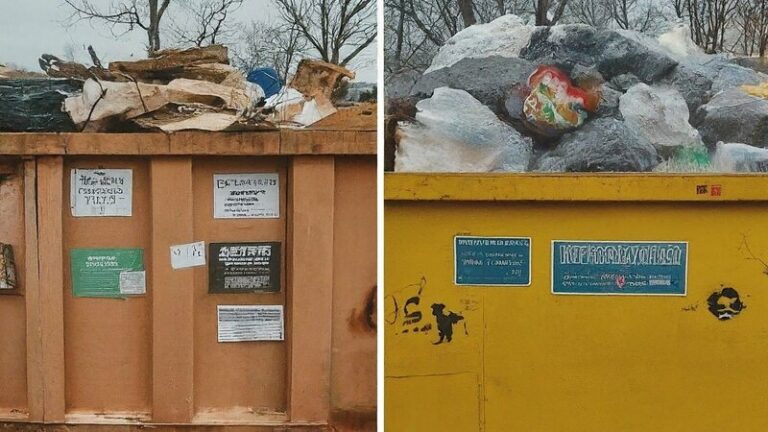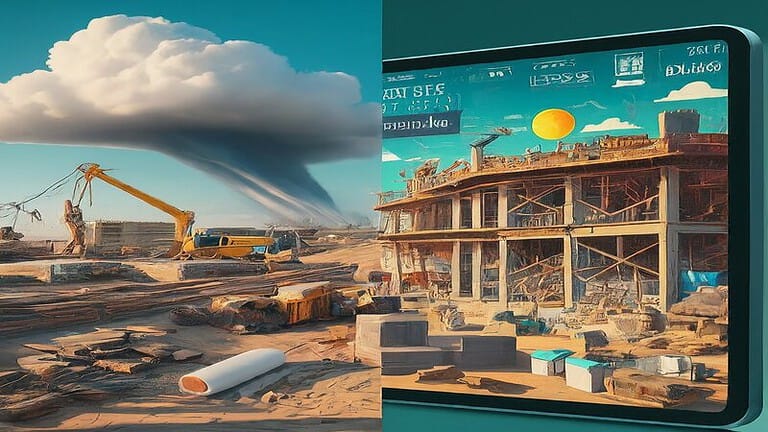The ultimate guide to the digital procurement process – Learn how to use technology to manage your construction procurement, find some great software features, and tips on what to pay attention to when buying your software.
What is the procurement process in construction?
The procurement process in construction is the purchasing process of goods or services from an external source. It typically involves six steps: identification of need, selection of supplier, negotiation of the procurement contract, award of contract, the performance of the contract, and close out.
The first step, identification of need, entails understanding what goods or services are required to complete a project. This step is often completed by the project manager or owner. The second step, the selection of a supplier, involves choosing a supplier who can provide the required goods or services at a reasonable price. This step is often completed by a procurement committee. The third step, negotiation of the contract, involves negotiating the terms and conditions of the contract with the supplier. This step is often completed by the project manager or owner and the chosen supplier. The fourth step, the award of contract, occurs when the project manager or owner chooses to award the contract to the chosen supplier. The fifth step, the performance of a contract, entails the actual delivery of goods or services by the supplier. This step is often completed by the chosen supplier. Finally, close out occurs when all contractual obligations have been fulfilled and all payments have been made. This final step is typically completed by the project manager or owner.
What are the main challenges in construction procurement management?
The construction procurement process is full of challenges, from spending transparency and visibility to contract utilization and compliance.
Here are some tips for managing suppliers and mitigating risks while reducing costs and achieving savings:
- Spend Transparency and Visibility
One of the biggest challenges in construction procurement is spending transparency and visibility. With so many different suppliers and contractors involved in a project, it can be difficult to track where all the money is going. This is why it’s important to have a robust system in place that can give you visibility into your spending.
- Contract Utilization and Compliance
Another challenge is contract utilization and compliance. It’s important to ensure that all the contracts you have in place are being used properly and that all the terms are being met. This can be a challenge if you have a lot of contracts or if your contracts are complex.
- Managing Suppliers and Mitigating Risks
Another challenge in construction procurement is managing suppliers and mitigating risks. There are a lot of risks associated with construction projects, from weather delays to unexpected cost overruns. It’s important to have a plan in place for how you will manage these risks, including how you will communicate with your suppliers.
- Cost Reductions and Savings
Finally, one of the biggest challenges in construction procurement is reducing costs and achieving savings. There are a lot of ways to save money on construction projects, from accurately comparing prices to saving work time.
The main benefit of implementing the right procurement system and strategy, is that it can help to ensure that projects are delivered on time and within budget. An advanced procurement software can also help to ensure that projects are delivered to the required quality standards.
Steps in the procurement process
There are several steps in the digital procurement process:
- Request for proposal (RFP): The first step is to issue an RFP to potential suppliers. This document should include all the specifications and requirements in the bill of quantity for the project.
- Supplier selection: After receiving proposals from various suppliers, you will need to select the one that best meets your needs. Consider factors such as price, quality, and delivery time when making your decision.
- Contract negotiation: Once you have selected a supplier, you will need to negotiate the terms of the contract. This includes agreeing on a price, delivery schedule, and payment terms.
- Order placement: Once the contract is signed, you can place your order with the supplier. Be sure to provide all the required information and specifications so that they can deliver the right product or service.
- Receiving and inspection: Once the goods or services are delivered, be sure to inspect them to ensure they meet your quality standards. If there are any problems, be sure to communicate them to the supplier so that they can be rectified immediately.
- Payment: The final step is to make payment according to the terms of the contract. This can be done electronically or by sending a check.
Benefits Of A Digital Procurement Process
A digital procurement process can offer many benefits to businesses, including reduced costs, faster response times, and reduced errors.
Digital procurement can help businesses save money by reducing the need for paper documents and manual data entry. In addition, digital procurement can help businesses speed up their response time to requests for quotations (RFQs), bids, and proposals. Automating the procurement process can also help businesses avoid errors that can occur during manual data entry.
Steps for planning and managing contractual engagements using ConWize software
If you want to deliver a project on time and on budget, it’s critical to have a clear plan for all the contractual engagements required. To do this, follow these steps:
- Create a “map” of the required contractual engagements in the project. This will help you identify which roles need to be filled, what skills and experience are needed, and what the timelines are for each engagement.
- Plan and schedule the contractual engagements. This includes identifying when each role needs to be filled, sending out bid invitations, and budgeting for each engagement.
- Send bid invites to contractors, suppliers, and consultants. Include all the information they need to submit a bid, such as timelines, deliverables, and budget.
- Compare bids. Make sure you understand the terms of each bid before making a decision.
- Budget compliance. Once you’ve selected a contractor or supplier, make sure their price fits within your project budget.
- Contractual engagement approval. Before any work can begin, make sure the engagement is approved by the relevant stakeholders.
- Contract preparation. This step includes drafting the contract and getting it signed by both parties.
- Sign the contract with a digital signature. Use a digital signature tool to add an extra layer of security to your contract.
9API to easily integrate with your existing applications: In order to make the process of creating and managing contractual engagements as smooth as possible, you should use an API that easily integrates with your existing applications. By doing this, you can automate many of the manual steps involved in the process and make it easier to track progress and ensure compliance.
Advantages of using ConWize Construction Procurement Automation platform
ConWize helps streamline and simplify procurement processes, enables consistency, and early identification of risks, and improves project profitability.
Tracks progress in real-time of contractual engagements and cost control status for better control of procurement process and risk management in each of the projects
The advantages are:
- Simplifies complex procurement processes and frees up time for the execution team to perform important work on the site.
- Eliminates the need for excel sheets and endless emails.
- Centralized dashboard to view all company’s projects to identify contractual engagements gaps and to better negotiate with contractors.
- Improves transparency for senior management regarding the company’s projects status
- Creates one shared work environment for the entire project team
- Standardization of procurement processes in the company that allows to build a central organizational knowledge base, empower execution teams and reduce knowledge gaps.
- Eases and saves time for subcontractors, allows them to submit bids digitally
- Project documents management solution in one convenient, accessible and secure place
Conclusion
I hope this guide has given you a better understanding of the digital procurement process and how it can benefit your business. If you’re looking to streamline your procurement process and save time and money, consider investing in a digital procurement solution. With the right solution in place, you’ll be able to automate many of the tasks associated with procurements, freeing up your time to focus on other areas of your business. Thanks for reading!















